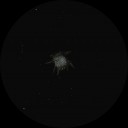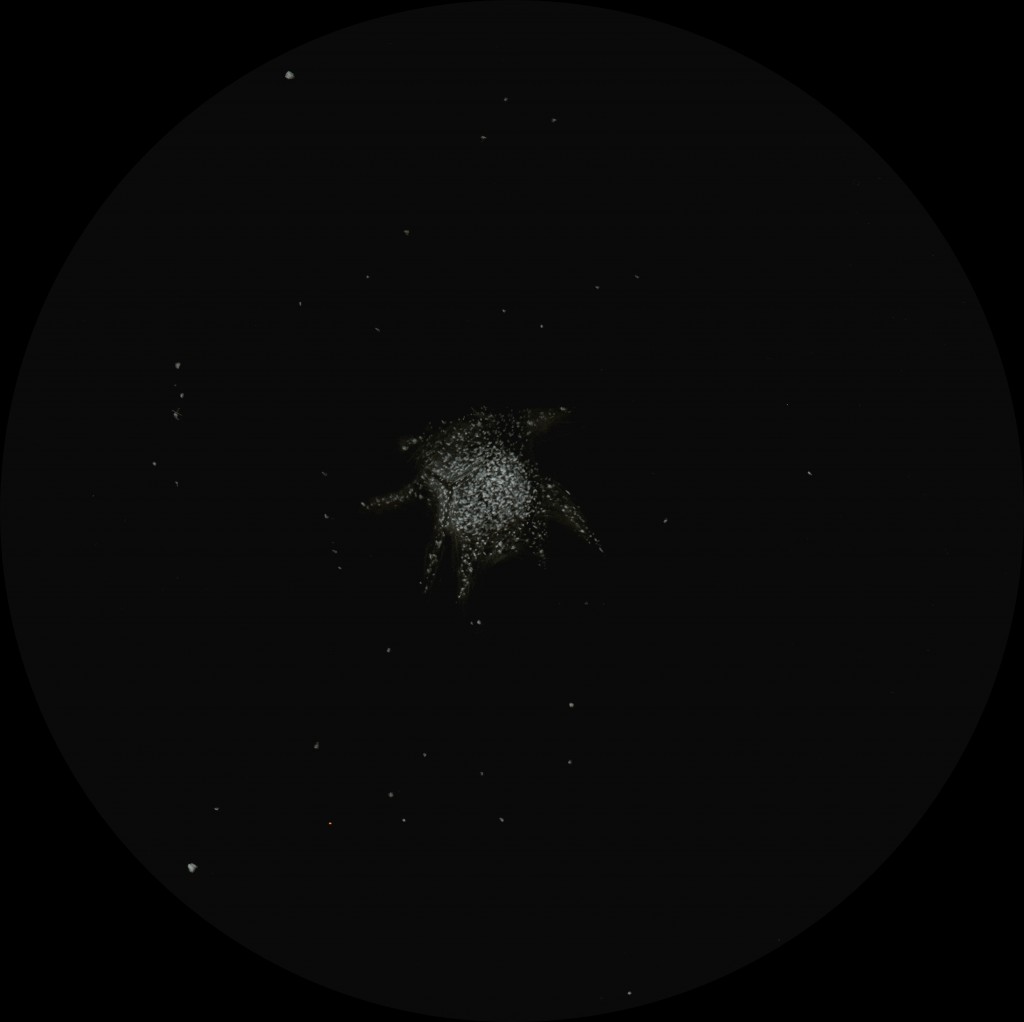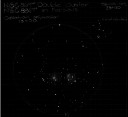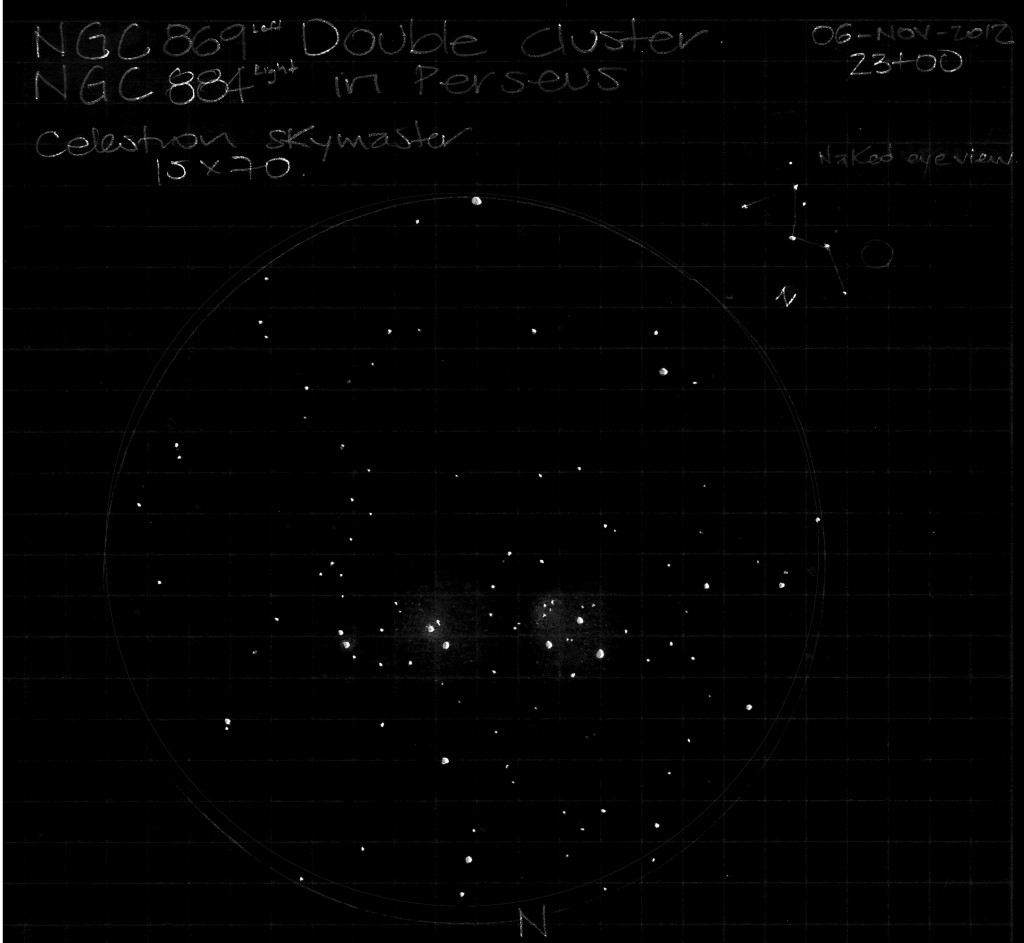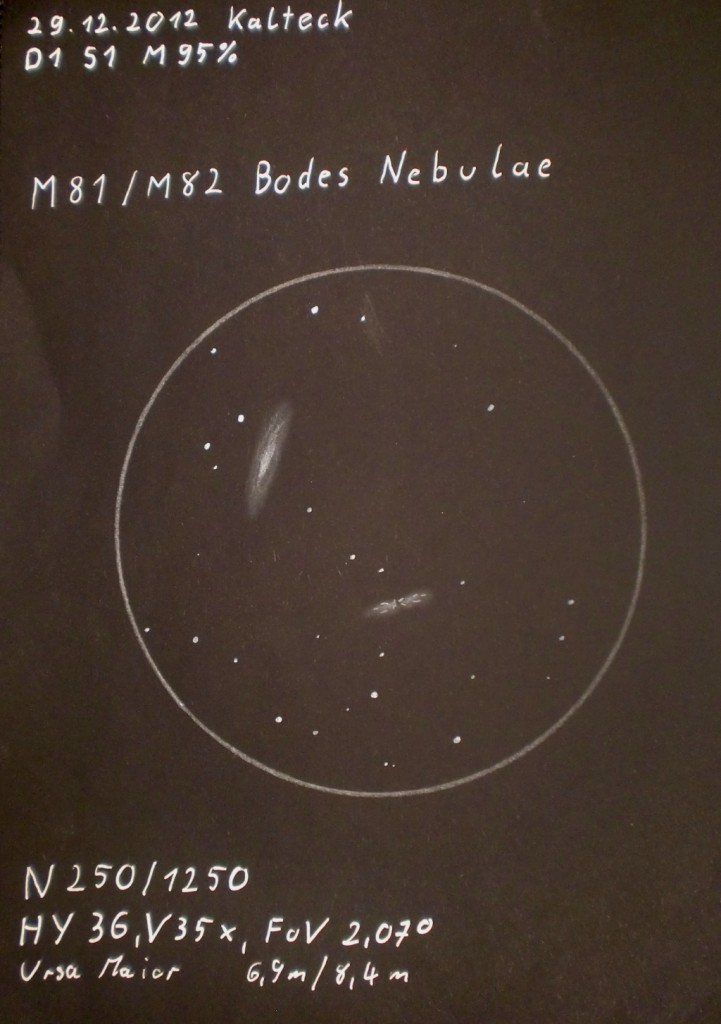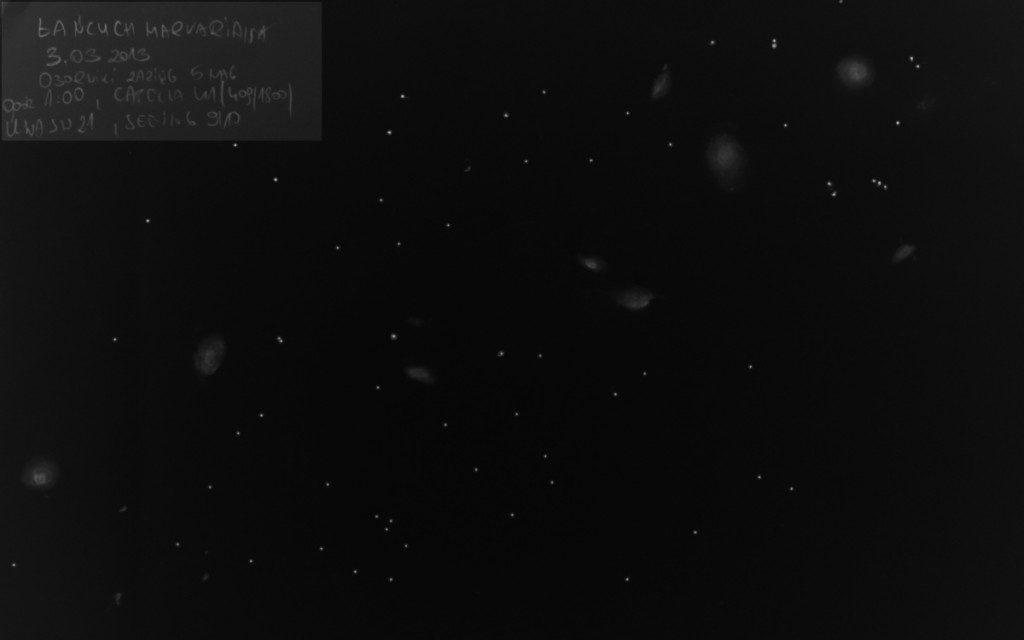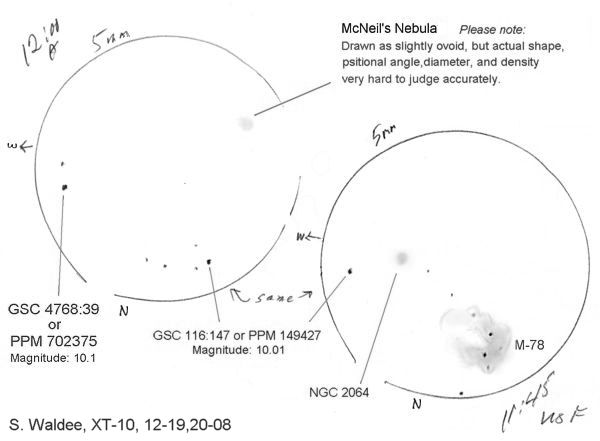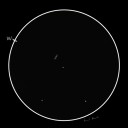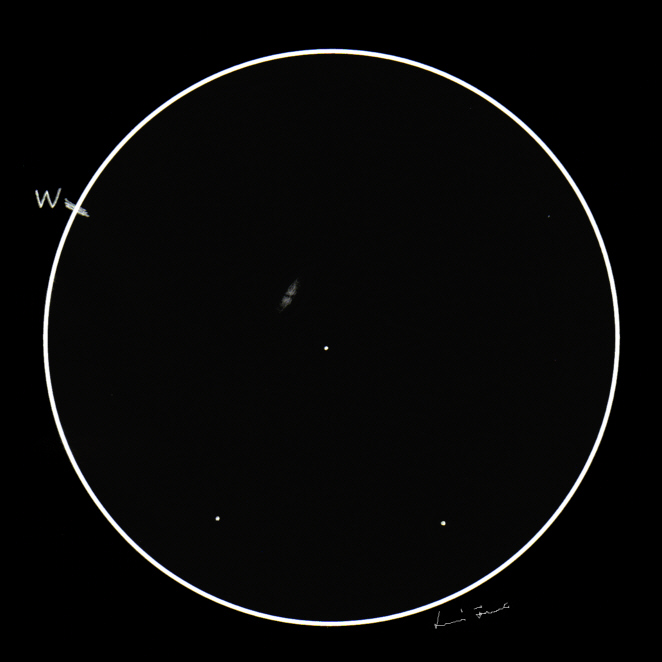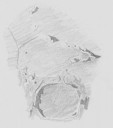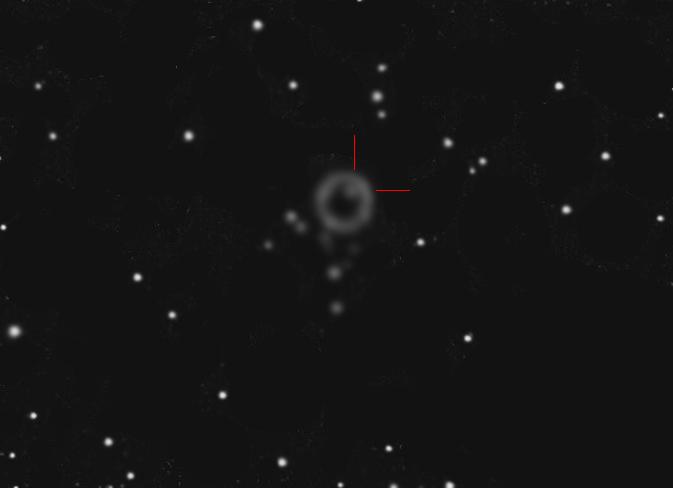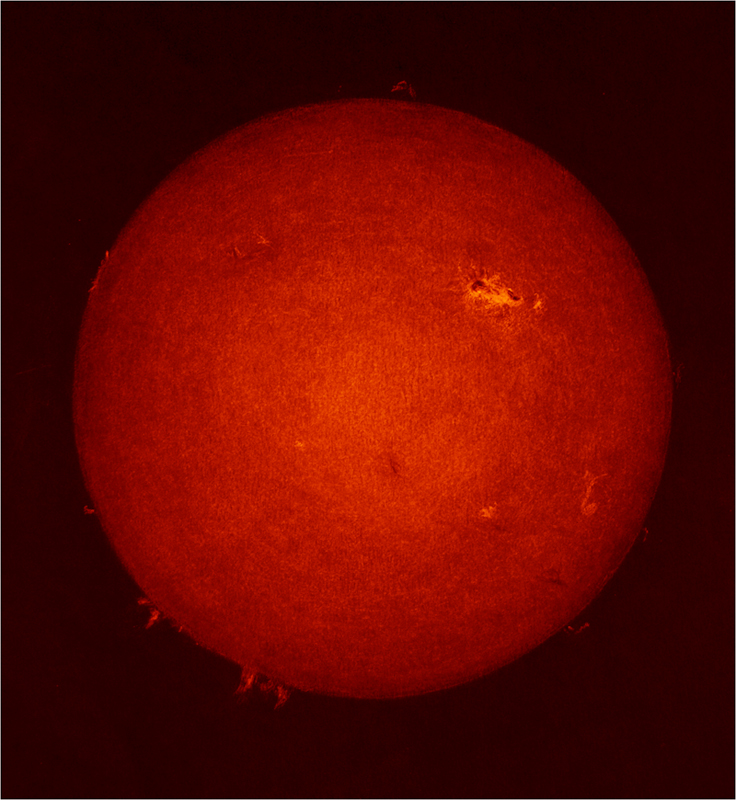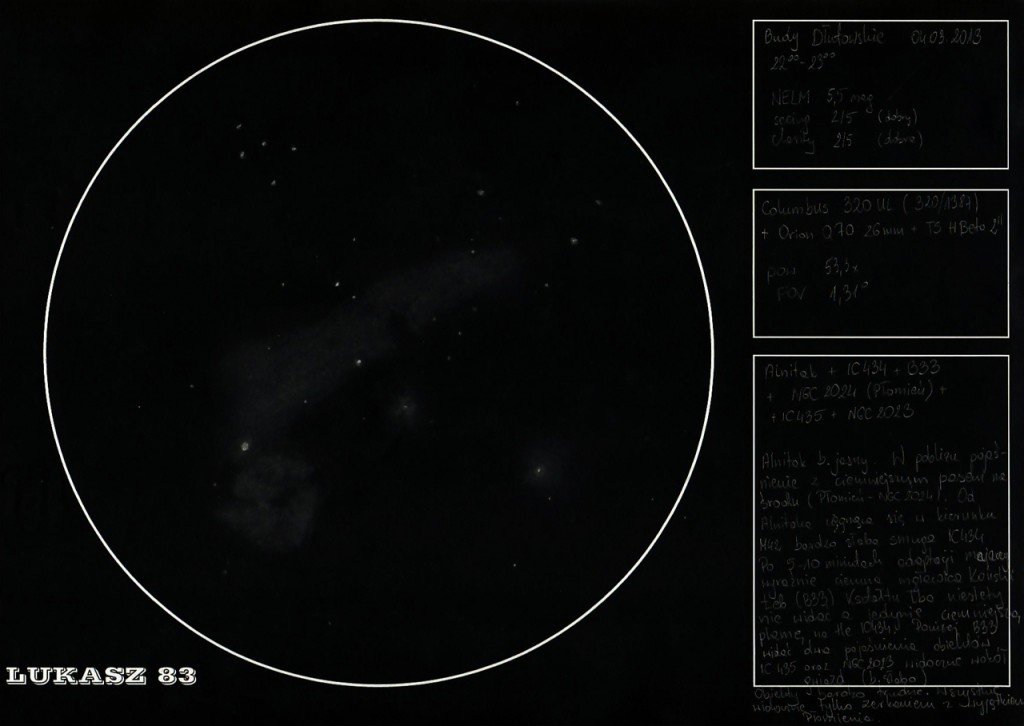
Hi,
In attachment you can find sketch of nebulas complex in Orion around
Alnitak – NGC 2024 (Flame Nebula), IC434 and B33 (Horsehead Nebula),
IC435, NGC 2023
Short description:
Object Name NGC 2024 (Flame Nebula), IC434 and B33
(Horsehead Nebula), IC435, NGC 2023
Object Type emission nebulas and dark nebula (Barnard 33)
Location Budy Dłutowskie – small village in central Poland
Date 04.03.2013
Media graphite pencil, white paper, color invert
Telescope Columbus 320UL (320/1384 Newtonian) +
Orion Q70 26mm + TS H-Beta 2”’
Seeing 2/5 (good)
Transparency 2/5 (good)
NELM 5,5 mag
I’ve heard that is possible to observe B33 under medium sky
condtitions (5-6mag) using 12” or bigger scope and H-Beta filter and
I’ve wondered is it true… In 2012 I bought 2” TS B-Beta filter and
after some months of really bad weather in Poland I tried it three
days ago.
When you looking thru the eyepiece you can see Alnitak and misty
shadow of flame nebula. All views using H-beta filter are really dark
so you need few minutes for eye adaptation and you need also to cut
off from all external light sources (using some towel on head or
something like that 🙂 ).
After this adaptation really faint fog of IC434 will appear and in the
middle you can observe small black roundy shaped place in this nebula
– this is the shape of B33.
You won’t observe horsehead shape in 12-16” telescope probably even
in extremely good sky conditions. To see horeheadshape you need 18”
or bigger scope and H-Beta filter.
But its worth to try to observe it. It’s a challenge which can give
you knowledge how you can “detect” and observe really faint objects.
Clear Sky
Łukasz

